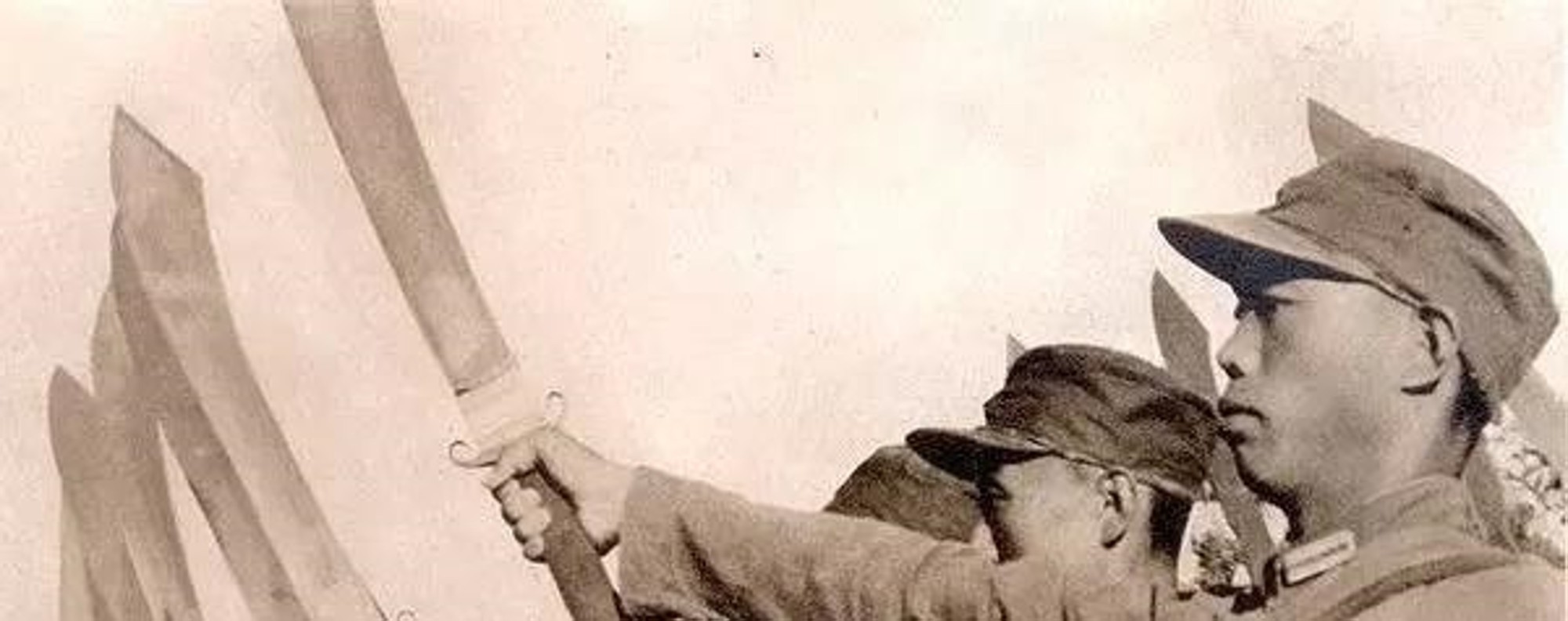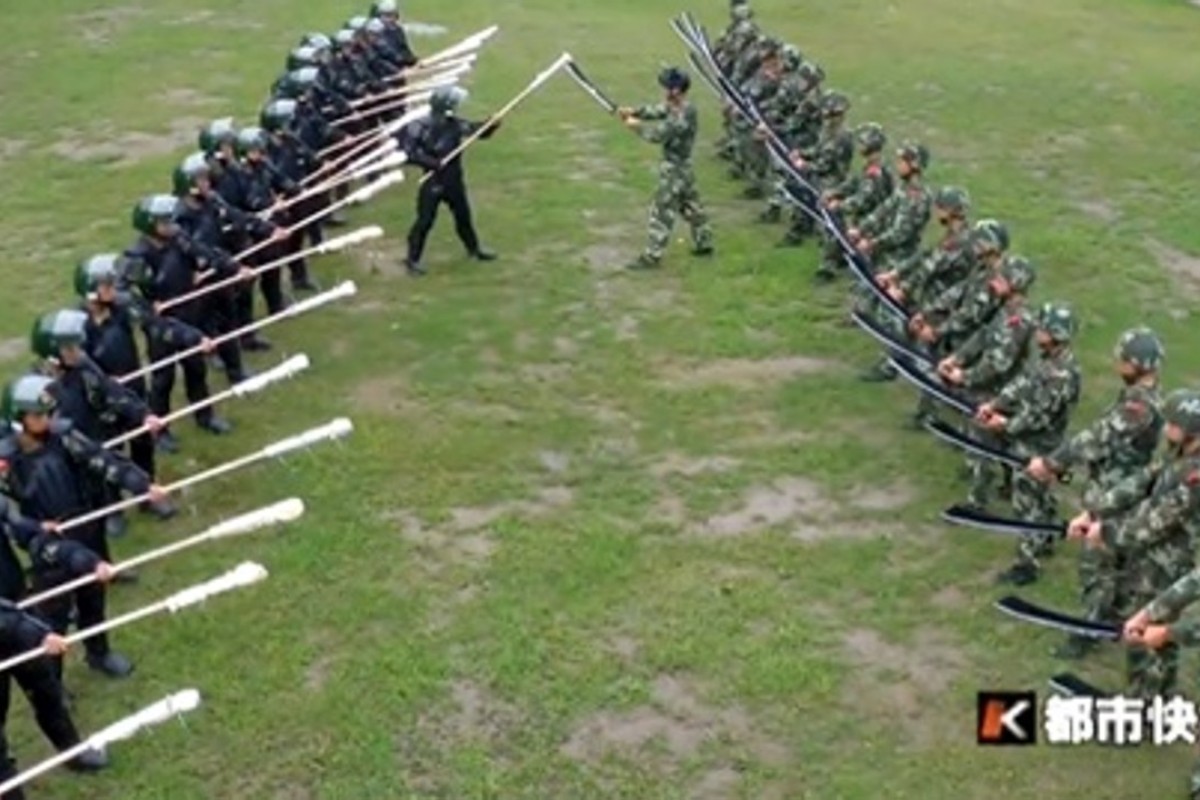 WHO WOULD WIN: CHINESE BROADSWORD VS JAPANESE BAYONET? POLICE ACADEMY HAS THE ANSWER
WHO WOULD WIN: CHINESE BROADSWORD VS JAPANESE BAYONET? POLICE ACADEMY HAS THE ANSWER
After a victory for mixed martial arts over tai chi, This Week in Asia settles another long-running combat rivalry
BY CHOW CHUNG-YAN
6 MAY 2017

Police officers armed with Japanese bayonets and Chinese broadswords square off. Photo: Handout
The martial arts world was recently set abuzz when MMA fighter Xu Xiaodong defeated tai chi master Wei Lei in a one-sided, 10-second bout in Chengdu, China. Some believe the victory proves Xu’s claim that traditional martial arts are outdated; others question whether Wei was fit to represent his sport. Either way, with a host of martial arts experts now lining up to fight Xu, the debate over the merits of various fighting styles looks set to rage on. Here, Chow Chung-yan weighs up another long-running combat rivalry - this one with its roots in the second world war
It is common for a country at war to hype up a certain weapon to motivate its people. In China during the second world war, the weapon that most captured the public’s imagination was the Chinese dadao (broadsword).
The war was brutally one-sided. Against Japanese imperial troops armed with bombers and tanks, most Chinese soldiers had only a simple rifle. Not only were the Japanese much better equipped, their soldiers were professionally trained. All Japanese soldiers had to go through intense training in jukendo – fighting with a bayonet.
Jukendo was a combat technique borrowed from the West and combined with traditional Japanese spear fighting moves. In battles, the Japanese applied it with deadly effect.

Chinese troops armed with dadao, or broadswords, during the second world war. Photo: Handout
While the Chinese enjoyed a numerical advantage, their soldiers were mostly peasants who had little martial training. Not only were Chinese soldiers outgunned by the Japanese, they were often outfought in melees as well.
In March 1933, a Chinese squad armed with the traditional broadsword carried out a daring sortie under the cover of night against Japanese troops occupying a section of the Great Wall. They won the close-quarter battle, but it was costly. The news greatly cheered the Chinese public.
The war propaganda singled out the dadao for praise, billing it as the killer weapon against Japanese jukendo.
The story was told and retold in the Chinese press and the legend grew with each telling. The dadao soon became the de facto symbol of Chinese resistance.
According to the legend, a group of martial arts masters studied Japanese jukendo and developed a special move to counter it. The story helped to revive Chinese morale and boosted soldiers’ confidence in engaging Japanese at close quarters.

Chinese police officers test the dadao against the bayonet in Zhejiang. Photo: Handout
The legend continues to this day. Today, in Chinese war dramas, you often see Chinese soldiers charging towards Japanese invaders with their broadswords raised, killing enemies with ease.
But is the Chinese dadao really effective against Japanese jukendo?
Gone in 10 seconds – Chinese MMA fighter wipes floor with ‘thunder-style’ tai chi master
Three years ago, the academy of armed police in Zhejiang ( 浙江 ) carried out an experiment. Forty armed police officers were organised into two teams. One received jukendo training and the other studied the dadao moves said to be devised by the masters. They then carried out three bouts of simulated fighting.

The team armed with bayonets won the competition against the broadswords with overwhelming results. Photo: Handout
The team armed with bayonets won the competition with overwhelming results. In one fight, within one minute, the dadao team were “wiped out” while the jukendo team suffered only three casualties.
It was why despite propaganda overdrive on the virtues of the traditional broadsword, Chinese troops throughout the war focused their training on bayonet practice. They eventually reached parity with their Japanese enemies.

The dadao team is wiped out. Photo: Handout
Chow Chung-yan



 Reply With Quote
Reply With Quote








